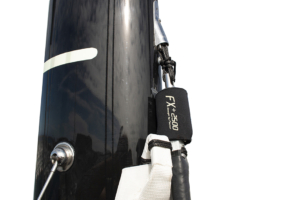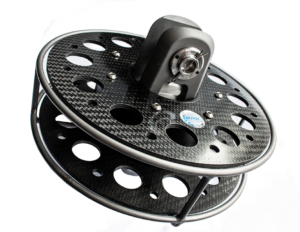Frequently Asked Questions about the locks systems
Hooks : quels sont les différents types de hooks?
- Facnor a développé des solutions pour les “faces avant” (Gennakers, Codes sails, Spi asymétriques), pour les “faces arrière” (GV lattées).
- Il faut distinguer également les hooks intégrés au mât des Hooks externes avec des accroches sur cadènes d’étai.
- les hooks-émerillons sont accrochés également aux cadènes d’étai mais ont la double fonction Hook-émeillon, comme leurs noms l’indiquent.
- les hooks Bullet sont utilisés lorsque les drisses nécessitent de larges angulations (typiquement, pour les spi asymétriques).
Hooks : quel est son intérêt?
- Les hooks permettent d’intégrer une solution 2-to-1 (mouflage de la drisse)
- pouvoir tendre la drisse par le bas
- permet de diminuer la compression dans le mât
- en utilisation trinquette, permet de dégager le pont lors des virements. Voir interview d’Halvard Mabire
Frequently Asked Questions about the structural furlers
What are the differences between a structural furler and Code sail furler?
The structural furler supports the mast and also furls the sail – whereas a Code sail furler enables only to roll in and out the flying sail. In case of structural furler, the forestay wire between mechanisms is made of stainless steel or textile according to sailboat length.
Why use a structural furler rather than a standard furling system?
The only reason is: performance.
As weight in highs is the enemy of performance, the structural furler offers the possibility of drastically reducing it.
For example, on a 35 ’boat, a structural furler weighs 3.5 kg compared to 25 kg for a furling gear …
What charge for a structural furler?
The load of a structural furler is defined by the stainless steel wire that the furler will replace (the boat sizes given are only indicative).
Structural furler: endless line or classic drum?
The endless line is more compact than a drum (to optimize the luff length) and has the advantage of having a larger maneuvering Ø to provide less torque effort (prevent from line overlapping). However, you need a deck plan suitable for the passage of continuous rope.
To prevent the sail from rolling out, you will need to make sure that you have tensioned the furling line.
A classic drum simplifies the deck plan, and above all secures the sail better in the furled position (only one cleat to operate). However, make sure that the storage capacity of the drum is sufficient to be able to completely furl your sail.
Can I partially furl my headsail when it is fitted on a structural furler?
No, you cannot. The structural furlers are used as in/out furler. Partial furling is not possible.
Can I hoist and lower my sail easily?
For structural furlers fitted with wire equivalent to 1 × 19 of 7 mm and less :
- We offer simple hoisting and lowering solutions.
- The STB has a sheave integrated into the swivel to lower the halyard along the luff.
- The STG comes standard with a halyard swivel to be able to hoist, adjust and lower the sail from the cockpit.
- For the FLT, the halyard swivel is optional.
For wires equivalent to 1 × 19 of 8 mm and more :
- We recommend the use of a textile wire with a sail with zipped luff.
- Installation: it is necessary to climb the mast to hoist and fix the sail. For lowering the sail, same opertaion but there are cost-effective solutions, please contact us.
- Locks: It is also possible to lock your genoa in order to hoist it and simply lower it from the deck: please contact us for presenting “custom” solution.
Is it possible to vary the forestay length to adjust the shape of my mast?
Structural furlers with wires equivalent to 1 × 19 of 7 mm and less are delivered with adjusting link plates allowing the length of the forestay to be adjusted.
For larger sizes, this adjustment is generally made through a textile attachment assembled onto the bottom and / or top mechanism.
What do the names of the structural furler correspond to?
The trade names (STK 5T, STK9T,…) correspond to the working load of the equivalent Rod cable (refer to the chart).
Up to what size of stainless steel wired forestay can a structural furler be used?
Facnor structural furlers can be used for forestay up to 7 mm diameter.
Beyond, it is necessary to go for a structural furler fitted on textile forestay.
What are the different possible configurations for a structural furler?
A structural furler can be configured in different ways: with various upper and lower end fitting. Many endings are possible (swivel eye at the bottom, twin spool or lashing eye at the top ..). In addition, the endings are switchable as they are screwed to the mechanisms.
See Facnor endings


















